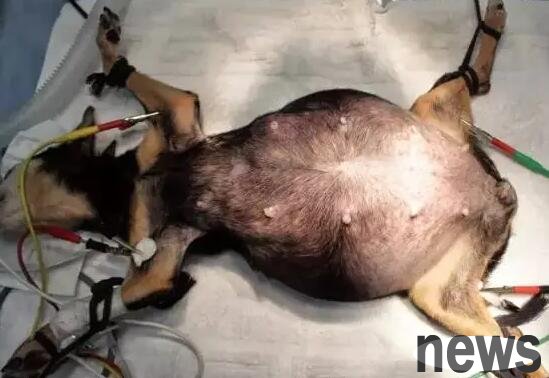Many pet owners often get told by doctors when they keep their dogs for 7-8 months: it is best to take time to perform sterilization on their dogs. Especially for female dogs, the doctor will say that early surgery will prevent dogs from having vari...
Many pet owners often get told by doctors when they keep their dogs for 7-8 months: it is best to take time to perform sterilization on their dogs. Especially for female dogs, the doctor will say that early surgery will prevent dogs from having various gynecological diseases when they get older in the future. So what is the reason? What disease are you prone to? Let’s listen to the detailed analysis of professionals.

Why do dogs get pus in uterine tract?
The menstrual cycle of dogs is somewhat different from that of humans. Usually, only those who are conceived will have the phenomenon of "pregnancy for ten months". Whether the dog is pregnant or not, the uterus will prepare a 2-month breeding bed to complete the estrus cycle. This is the nature of wolves raising together. As they get older, hormone disorders will cause abnormal gland hyperplasia in the endometrium. In addition, the influence of hygiene habits, bacteria from the mouth, intestines and even the ground will have the chance to enter the uterus, causing serious bacterial infections and causing pus storage.
What kind of dog has a high chance of getting uterine pus?
As long as the unspasted bitch is likely to accumulate pus! This disease will not differ depending on the dog breed. It is usually more likely to occur in older dogs; using female hormone-related drugs, disordered estrus cycles, and pseudo-pregnancy is a high-risk group; and having babies and incomplete ligation (with ovaries) is also easy to replace with uterine pus!
Why are there no pus in the uterus?

The uterine pus is divided into two types, one is [closed type] and the other is [open type]. You can know in the meaning that the pus in the [closed type] will not leak out of the body and will be less likely to be discovered; while the pus in the [open type] will leak out of the body and will be easier to find and seek medical attention.
How do you know that a dog has pus in uterine storing?
The standard time for uterine pus accumulation is 1-2 months after estrus. If it is [Open], you may feel "Why did you come again after just estrus?" At the beginning, the amount of bleeding is different from the past, and gradually smelly pus flows out, and you will also frequently lick your vagina, becoming picky in food, and you will feel unconscious. The [closed] uterine pus storage will only feel the loss of mental appetite, increased water drinking, fever, vomiting or diarrhea. If you do not pay attention to the previous estrus cycle, it may be regarded as "old" or delayed medical treatment due to general gastrointestinal diseases.
Therefore, parents who have unbreasted bitches at home must record the dog's estrus cycle in detail, and be careful to keep an eye on it whenever there is any change to avoid missing the opportunity for treatment.
How to check and confirm that the dog is really uterine pus?
Ascending white blood cells and turning left of the nucleus are marked as blood-storing pus, and the kidneys can also be damaged in severe cases. Abdominal X-rays and ultrasounds are necessary examination methods to check whether the uterus is swollen and pus-storing.
How to cure uterine pus?
The best treatment method is to remove the ovaries and hysterectomy through surgical procedures, but since pus has been formed, bacterial toxins usually have an impact on the body, so internal medicine supportive therapy and infection control are also necessary. As the pus is stored for longer, the wider the impact will be, and eventually it will become peritonitis and sepsis, resulting in death! Early detection and early treatment.
Friendly reminder
According to statistics, the older dogs are, the more likely they are to have uterine pus. This is also because this is a disease that requires surgical treatment, and older dogs will increase the risk of anesthesia, so parents who keep dogs should ligate their dogs as soon as possible! If you really don’t want to have children, you have to know the dog’s estrus cycle and seek medical treatment as soon as possible when you find problems. This is the best care for the dog.